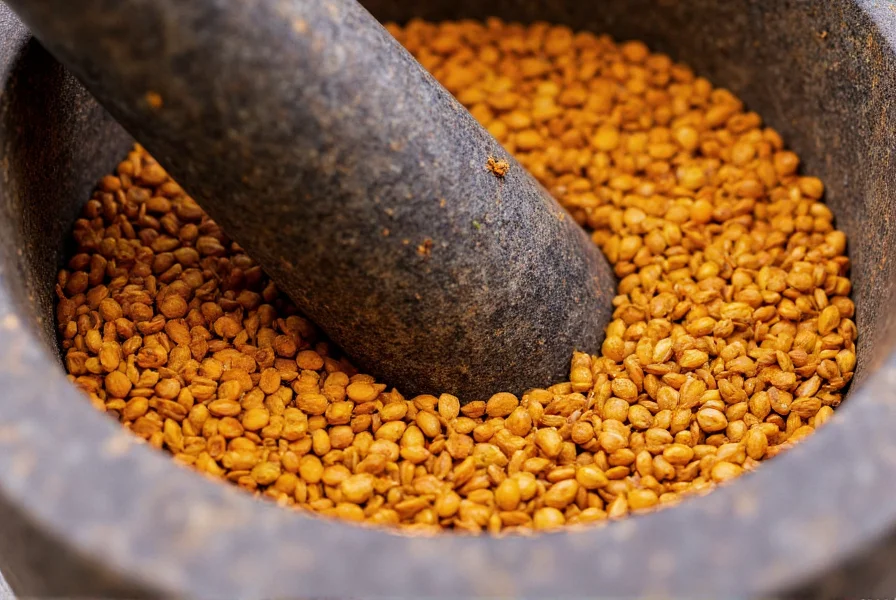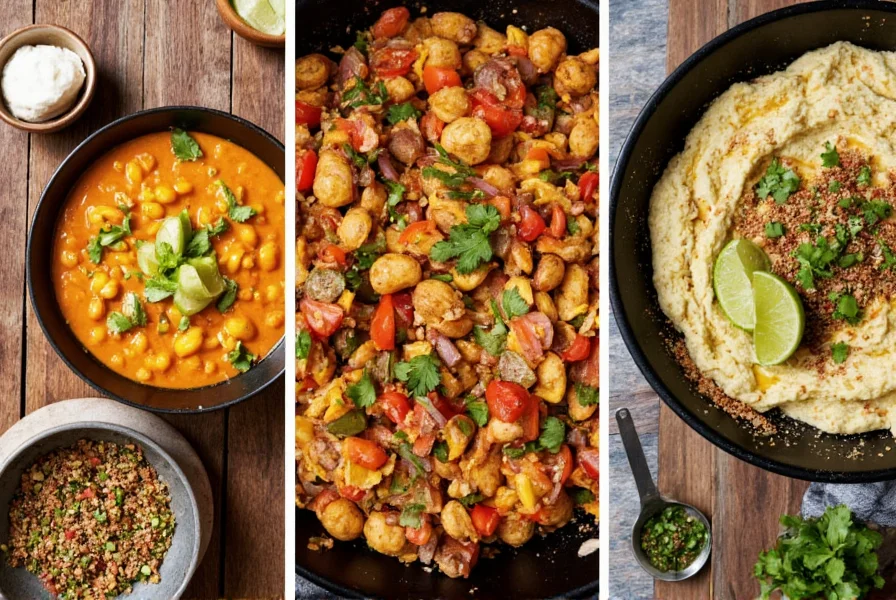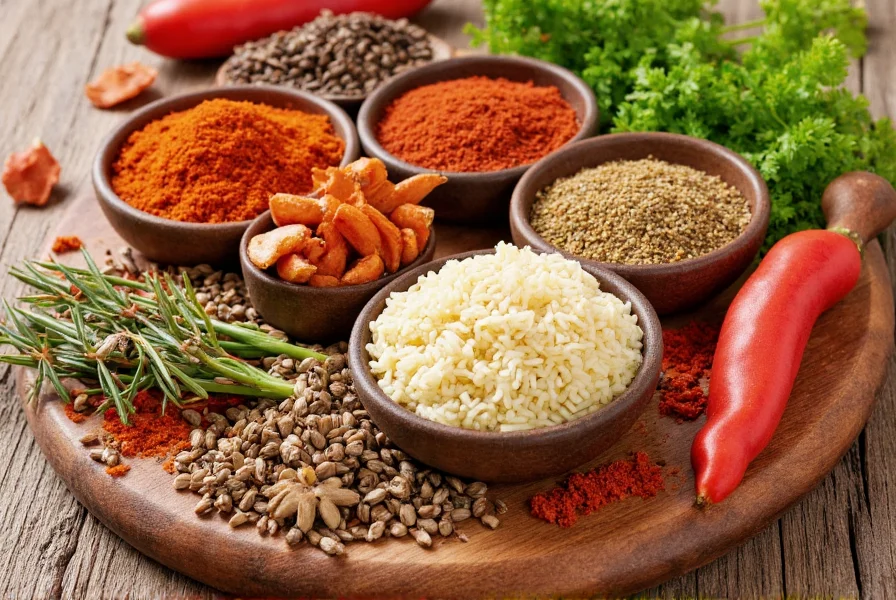Cumin has journeyed from ancient Egyptian tombs to modern kitchen pantries, establishing itself as one of the world's most widely used spices. Archaeologists have found cumin seeds in Syrian excavations dating back to the second millennium BCE, and the spice was so valued in Roman times that it was kept at the dining table alongside salt. Today, this versatile seed remains fundamental to authentic flavor profiles across multiple culinary traditions, particularly in regions with hot climates where its preservative qualities historically helped protect food from spoilage.
The Global Culinary Footprint of Cumin
Understanding cumin in Indian cuisine reveals why this spice forms the backbone of countless curry blends. In Indian cooking, cumin seeds (known as jeera) typically hit hot oil first in the tadka process, releasing aromatic compounds that form the flavor foundation for dishes like chana masala and biryani. The Middle Eastern za'atar blend often includes cumin alongside thyme and sumac, while North African ras el hanout relies on cumin for its earthy depth.
Mexican cuisine demonstrates another dimension of cumin in Mexican food through its prominent role in adobo sauces and chili powders. Unlike Indian preparations where cumin often appears as whole seeds, Mexican cooks typically use ground cumin to create the distinctive flavor of carne adovada and New Mexico-style green chile. This regional variation showcases cumin's adaptability—whether used whole, cracked, or ground, it transforms dishes with its characteristic warmth.

Mastering Cumin's Flavor Profile
The secret to unlocking cumin's full potential lies in proper handling. Whole cumin seeds contain volatile oils that release their most complex flavors when gently toasted. The toasting cumin seeds technique requires dry-heating seeds in a skillet over medium heat for 1-2 minutes until fragrant—overheating creates bitterness. This simple step increases the concentration of key aroma compounds like cuminaldehyde by up to 300%, according to food science research.
When considering cumin spice pairings, look to ingredients that balance its earthiness. Cumin harmonizes beautifully with:
- Citrus elements (lemon juice, orange zest)
- Smoky ingredients (chipotle peppers, smoked paprika)
- Sweet vegetables (carrots, sweet potatoes)
- Legumes (lentils, chickpeas, black beans)
- Tomatoes and tomato-based sauces
These combinations create the foundation for authentic dishes while allowing cumin's distinctive character to shine without overwhelming other flavors.
Practical Applications in Everyday Cooking
For home cooks exploring how to use cumin seeds in cooking, consider these practical applications:
| Dish Type | Cumin Application | Flavor Enhancement Tip |
|---|---|---|
| Bean Dishes | Add whole seeds to cooking water | Toast seeds first for deeper flavor penetration |
| Soups & Stews | Incorporate ground cumin early in cooking | Bloom in oil with onions for maximum flavor release |
| Rice & Grains | Add to cooking liquid | Use whole seeds for visual appeal and gradual flavor release |
| Marinades | Mix ground cumin with acids and oils | Allow 2+ hours for flavors to meld with protein |
Understanding these applications helps cooks avoid common mistakes like adding ground cumin too late in the cooking process, which prevents proper flavor integration. For the best results with cumin flavor profile development, incorporate it early enough to allow its compounds to meld with other ingredients but not so early that volatile aromatics dissipate.

Nutritional Value in Culinary Context
While not a significant source of daily nutrients by volume, cumin contributes meaningful cumin nutritional value to dishes. Two teaspoons (about 4g) of ground cumin provide approximately:
- 30% of the daily value for iron
- 15% of manganese requirements
- Small amounts of calcium and magnesium
- Natural plant compounds including terpenes and phenols
These compounds work synergistically with other food components, potentially enhancing the absorption of certain nutrients. The culinary significance lies not in cumin's standalone nutritional profile but in how it encourages consumption of nutrient-dense foods like legumes and vegetables through improved flavor and palatability.
Storage and Substitution Guidance
To maintain optimal flavor, store whole cumin seeds in an airtight container away from light and heat. Properly stored, they retain peak flavor for 12-18 months, significantly longer than ground cumin, which begins losing potency after 6 months. For those seeking cumin substitute options, consider these alternatives based on your culinary needs:
- Caraway seeds: Similar earthy profile but with more anise notes (use 3/4 quantity)
- Coriander seeds: Milder, citrusy alternative (use 1.5x quantity)
- Fennel seeds: Sweeter profile works in some applications (use 1/2 quantity)
- Garam masala: For Indian dishes, provides complex alternative (use equal quantity)
Remember that no substitute perfectly replicates cumin's unique flavor signature. When exploring cumin health benefits food applications, focus on how its flavor encourages consumption of wholesome ingredients rather than making specific health claims.
Exploring Cumin's Culinary Versatility
Modern chefs continue discovering innovative applications for this ancient spice. Contemporary interpretations include cumin-infused oils for finishing roasted vegetables, cumin-scented simple syrups for craft cocktails, and even subtle additions to chocolate-based desserts where its earthiness complements cocoa's natural bitterness. The key to successful experimentation lies in understanding cumin's fundamental characteristics and respecting its potency—start with small quantities and adjust to taste.
What foods pair best with cumin?
Cumin pairs exceptionally well with legumes (especially chickpeas and black beans), roasted root vegetables, tomato-based sauces, grilled meats, and citrus elements. Its earthy warmth complements the natural sweetness of carrots and sweet potatoes while cutting through the richness of fatty meats like lamb. For authentic best dishes with cumin, try it in hummus, chili, curry, and spice-rubbed roasted vegetables.
Should I use whole cumin seeds or ground cumin?
Whole cumin seeds offer superior flavor retention and are ideal for dishes where visual texture matters, such as rice pilafs or bean stews. Toast whole seeds before use to maximize flavor. Ground cumin works better in sauces, marinades, and spice blends where even distribution is important. For most cooking applications, toasting and grinding whole seeds just before use delivers the most vibrant flavor compared to pre-ground spice.
How can I prevent cumin from tasting bitter?
Bitterness occurs when cumin is overheated or used in excessive quantities. To prevent this, toast whole seeds over medium-low heat just until fragrant (about 1-2 minutes), then immediately remove from heat. When using ground cumin, add it after onions have softened but before liquids are introduced, allowing the spice to 'bloom' in the oil without burning. Start with 1/4 teaspoon per serving and adjust to taste—cumin's flavor intensifies as dishes cook.
Can cumin be used in sweet dishes?
Yes, cumin appears in some traditional sweet preparations, particularly in Middle Eastern and Indian cuisines. It works well in small quantities with chocolate, mango, and other tropical fruits. Try adding a pinch of toasted, ground cumin to chocolate mole sauce, mango chutney, or even certain cookie recipes. The key is restraint—use just enough to add complexity without dominating the sweet profile. This application demonstrates cumin's versatility beyond typical savory cumin food applications.
How does cumin differ from caraway?
Though visually similar, cumin and caraway have distinct flavor profiles. Cumin delivers a warm, earthy taste with citrus notes and slight bitterness, while caraway has a more pronounced anise-like flavor with peppery undertones. Cumin seeds are lighter in color (yellowish-brown) and slightly larger than caraway's darker, crescent-shaped seeds. In cooking, they're not direct substitutes—cumin works better in Middle Eastern and Indian dishes, while caraway features prominently in Central European cuisine like rye bread and goulash.











 浙公网安备
33010002000092号
浙公网安备
33010002000092号 浙B2-20120091-4
浙B2-20120091-4